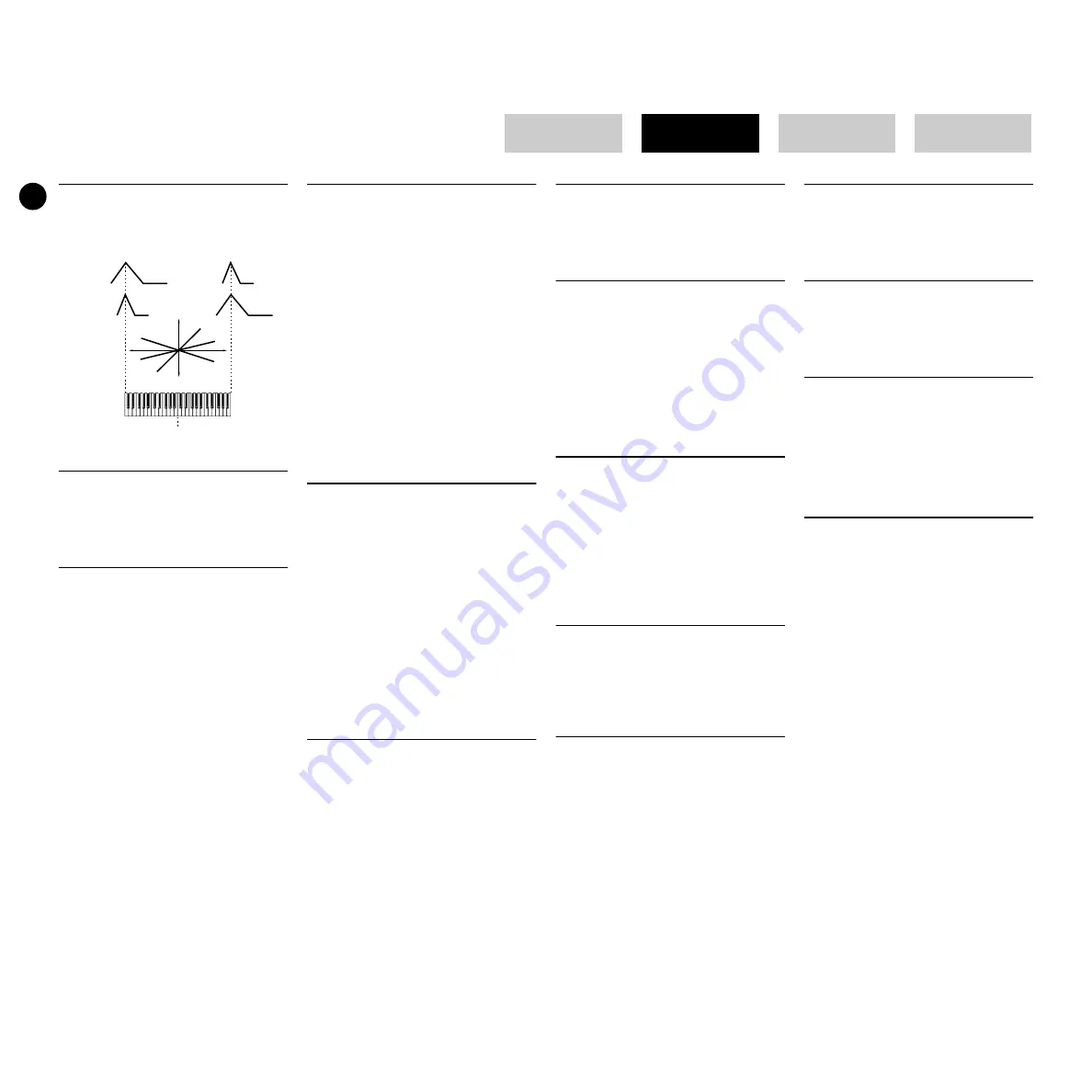
110
Basics Section
Quick Guide
Reference
Appendix
*28
Element control according to the
note position on the keyboard
(ex. PEG Time : Speed of PEG change)
*29
When user arpeggio is selected, you can clear
the selected arpeggio data by using the [SF5]
button.
*30
You can also turn Arpeggio on/off from the
front panel with the [ARPEGGIO ON/OFF]
button (Voice Edit). Arpeggio Switch is not
available for the Multi Plug-in Parts 17-32.
*31
sync-off
The first time you press a key, the first note of
the arpeggiator pattern is played. From the
second and subsequent key presses, the
arpeggiator note that is played back depends
on the arpeggiator tempo and the timing of
the arpeggio pattern. For example, in the case
of a 1-bar arpeggio pattern, if the second key
press falls on the third beat of the bar, the
arpeggio pattern plays back from the third
beat onward. In other words, the first key
press is used to start the arpeggio pattern and
thereafter you can use the key to “mute” or
“un-mute” the pattern by, respectively,
holding it down or releasing it. This is
particularly useful when the arpeggiator is
being used to generate drum patterns.
*32
sort
Plays back notes in ascending order from the
lowest key pressed to the highest.
thru
Plays back notes in the order in which the
keys are pressed.
direct
Plays back the notes exactly as you play them.
If changes to Voice parameters (such as Pan or
Cutoff frequency) are included in the
Arpeggio sequence data,they will be applied
and reproduced whenever the Arpeggio plays
back.
*33
With the “sort” and “thru” settings, the order
in which notes are played back will depend on
the Arpeggio sequence data.
*34
If the Arpeggio Category is set to Ct, you will
not hear any sounds unless you select “direct”
here.
*35
original
The Arpeggio plays back at the preset
velocities.
thru
The Arpeggio plays back according to the
velocity of your playing. For example, if you
play the notes strongly, the playback volume
of the Arpeggio increases.
*36
You can also create a lower and an upper
trigger range for the Arpeggio, with a “hole”
in the middle, by specifying the highest note
first. For example, setting a Note Limit of “C5-
C4” lets you trigger the Arpeggio by playing
notes in the two ranges of C -2 to C4 and C5
to G8; notes played between C4 and C5 have
no effect on the Arpeggio.
*37
The Velocity/Gate Time cannot be decreased
beyond its normal minimum of 1; any values
outside that range will automatically be
limited to the minimum.
*38
The Velocity cannot be decreased or increased
beyond its normal range of 1 to 127; any
values outside that range will automatically
be limited to the minimum or maximum.
*39
You can set the parameters related Voice only
when entering the Utility mode ([F3]
→
[SF2]) from the Voice mode.
*40
You can set the parameters related Voice only
when entering the Utility mode ([F3]
→
[SF3])
from the Voice mode.
*41
This parameter’s function varies according to
the selected Filter Type. If the selected filter is
an LPF, HPF, BPF (excluding the BPFw), or
BEF, this parameter is used to set the
Resonance. For the BPFw, it is used to adjust
the Width of the band.
*42
This parameter is available for the LPF when
the filter used by the part is a combination
type of LPF and HPF (Performance/Mixing
Part Edit).
Basic pitch (center Key)
Positive value
Higher range
Lower range
Slower speed
Faster speed
+63
+30
-40
Negative value
Summary of Contents for S90
Page 136: ...136 MEMO ...
















































